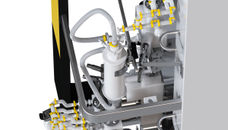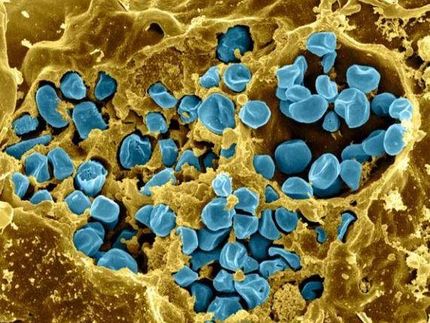Membrane-coat proteins: Bacteria have them too
MBL discovery could yield evolutionary insights and new model organism
Although they are present almost everywhere, on land and sea, a group of related bacteria in the superphylum Planctomycetes-Verrucomicrobia-Chlamydiae, or PVC, have remained in relative obscurity ever since they were first described about a decade ago. Scientists at the European molecular biology Laboratory (EMBL) in Heidelberg, Germany, have discovered that these poorly-studied bacteria possess proteins thought to exist only in eukaryotes – organisms whose cells have a nucleus. Their findings, featured in PLoS biology, could help to unravel part of the evolutionary history of eukaryotic cells such as our own.
In eukaryotes, the endomembrane system is a network of membrane-bound compartments which stores and transports material within the cell. These compartments, which include organelles such as the endoplasmic reticulum and the Golgi complex, also exchange portions of membrane with each other, by forming and absorbing vesicles. Scientists believed that membrane-bound compartments were unique to eukaryotic cells, and that membrane-coat proteins, which have a unique architecture and are associated with the endomembrane system, existed only in eukaryotes. Recently, however, membrane-bound compartments were observed in PVC bacteria.
In the new study, researchers in the group of Iain Mattaj, Director General of EMBL, are the first to provide molecular evidence that the coat proteins that shape the eukaryotic endomembrane system also exist in prokaryotes. Using a combination of bioinformatics, molecular biology and electron microscopy, the EMBL scientists found that proteins with the characteristic membrane-coat architecture also exist in members of the PVC group, but not in any other bacteria, in association with the membranes of subcellular compartments.
"Our findings provide unexpected clues as to how the endomembrane system of eukaryotes evolved," says Damien Devos, who led the study, "and since they are relatively simple cells, these bacteria could be used as model organisms for studying how this system works."
Most read news
Other news from the department science
These products might interest you

Hahnemühle LifeScience Catalogue Industry & Laboratory by Hahnemühle
Wide variety of Filter Papers for all Laboratory and Industrial Applications
Filtration Solutions in the Life Sciences, Chemical and Pharmaceutical Sectors

Hydrosart® Ultrafilter by Sartorius
Efficient ultrafiltration for biotech and pharma
Maximum flow rates and minimum protein loss with Hydrosart® membranes

Hydrosart® Microfilter by Sartorius
Hydrophilic microfilters for bioprocesses
Minimal protein adsorption and high flow rates

Sartobind® Rapid A by Sartorius
Efficient chromatography with disposable membranes
Increase productivity and reduce costs with fast cycle times

Sartopore® Platinum by Sartorius
Efficient filtration with minimal protein adsorption
Reduces rinsing volume by 95 % and offers 1 m² filtration area per 10"

Polyethersulfone Ultrafilter by Sartorius
Reliable filtration with PESU membranes
Perfect for biotechnology and pharmaceuticals, withstands sterilisation and high temperatures

Polyethersulfone Microfilter by Sartorius
Biotechnological filtration made easy
Highly stable 0.1 µm PESU membranes for maximum efficiency

Get the life science industry in your inbox
By submitting this form you agree that LUMITOS AG will send you the newsletter(s) selected above by email. Your data will not be passed on to third parties. Your data will be stored and processed in accordance with our data protection regulations. LUMITOS may contact you by email for the purpose of advertising or market and opinion surveys. You can revoke your consent at any time without giving reasons to LUMITOS AG, Ernst-Augustin-Str. 2, 12489 Berlin, Germany or by e-mail at revoke@lumitos.com with effect for the future. In addition, each email contains a link to unsubscribe from the corresponding newsletter.



















































